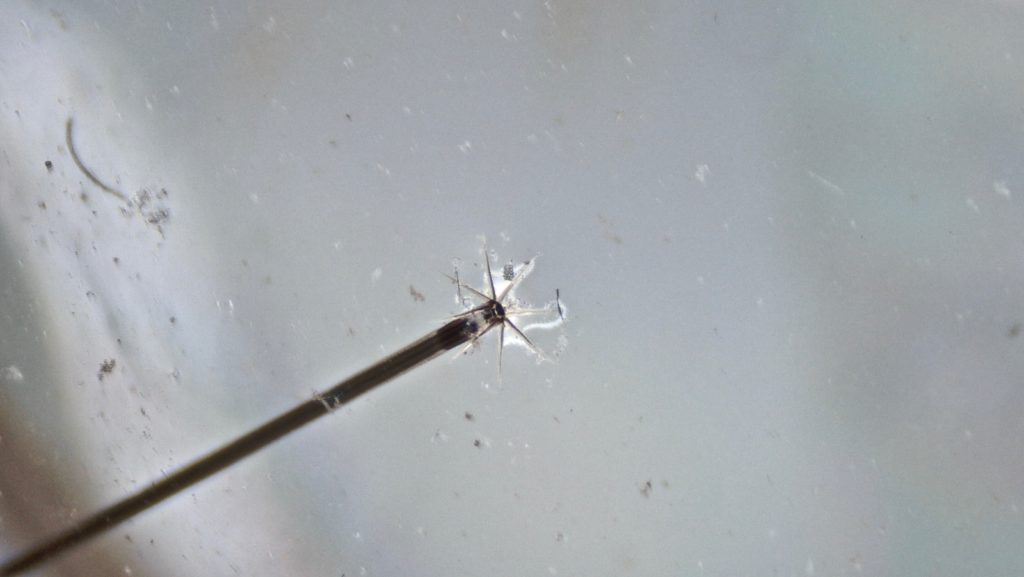Most lagoon-dwelling hoverflies have a characteristic breathing tube extending out the rear end, which acts like a snorkel giving them the name long-tailed larva or rat-tailed maggot. The larva is capable of extending out and retracting this snorkel into its body, which it will often do as it moves deeper into a Lagoon or if the water surface is disturbed (as if a predator were fishing for maggots).
The tube has eight little feathered extensions at the tip (called interspiracular setae), which rest on the surface tension of the water keeping it at the surface allowing the larva to breath.



